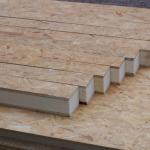How to remove eyelash extensions at home?
Wearing eyelash extensions for a long period of time is not recommended. Due to the treatment of the roots with chemical compounds, the bulbs are weakened, which is fraught with hair loss and slowing down their growth. The extended material makes the eyelid heavier, causing discomfort. Therefore, it is important to know how to properly remove artificial eyelashes without harm.
Eyelash removers
There are tools that help to remove eyelashes at home on their own. They are mainly used if the procedure was carried out using a resistant adhesive that cannot be removed with natural compounds. These include:
- Albucid;
- remover;
- debonder.
Albucid is a drug intended for the treatment of eye diseases. The composition includes aggressive components, so it is necessary to remove artificial hairs with it very carefully, following the rules, and only as a last resort. To do this, a cotton swab is moistened in Albucid and carried out along the eyelash growth line. Gradually, at intervals of a couple of minutes, 2 more layers are applied. After half an hour, you can try to remove the extended hairs.

The debonder has a liquid consistency and will easily dissolve the glue very quickly, within a few minutes. The product is approved for use with and lactating women. But with independent use, you need to make sure that the drug does not get on the mucous membrane, as it causes a strong burning sensation. The procedure for removing artificial hairs is as follows:
- First, the eyes are cleaned of cosmetics and moisturized.
- Glue the lower eyelid with a special cosmetic tape.
- Apply debonder with a cotton swab along the contour of the eyelids towards the inner corner of the eye.
- After a few minutes, the extended eyelashes should be removed.
- Wipe the skin with a cotton pad to remove the remnants of the product.
- Degrease the skin with an alcohol-free lotion.
Remover in the form of lotion, gel, liquid, cream or paste acts gently and is therefore suitable for those with sensitive skin. In addition, the drug has a positive effect on eyelashes. It is applied similarly to the debonder:
- The eyelids are protected with cotton pads.
- Apply a remover to the skin along the growth of hairs and leave it to act for several minutes.
- Remove loose hairs and rinse eyes with water.
It is best to choose an option with a thick consistency, since then you can be sure that it will not spread and fall on the mucous membrane of the eye. The remover often causes allergic reactions, so before using it, it is recommended to test it by applying a little product to the elbow or wrist and wait 10 minutes. If there is no redness, then the drug is applied without fear.

1. The use of oils.
In order to independently remove eyelash extensions at home, vegetable oils are often chosen. They are safe and not only do not harm, but also strengthen the hairs weakened after the procedure.
At home, to remove eyelashes, they will be liberally lubricated with castor oil and applied overnight with cotton pads soaked in it. From above, the compress is pressed down with a special sleep mask so that it fits as tightly as possible. Remove the mask and compress in the morning. The eyelashes should be well behind.
When removing hairs with burdock oil, the exposure time should not be more than 20 minutes. Otherwise, swelling of the eyelid may occur. Before use, it should be heated in a water bath. So it will better penetrate the structure of the hairs. Oil is applied only to the middle and stretched to the ends. It is not worth lubricating the cilia along the entire length in order to avoid getting the product on the mucous membrane. Excess oil is removed with a cotton pad.

2. Exposure to steam.
Steam is often used to remove eyelash extensions at home. The risk of damaging your own hairs is minimized, but you need to be careful that the glue dissolved under the action of steam does not get on the mucous membrane and does not cause irritation. Before the procedure, it is necessary to completely remove makeup from the eyes, remove contact lenses.
- For a steam bath, water is heated to a temperature of 70-80 degrees and poured into a plastic container.
- Tilt your head over a container of water and cover with a towel to allow the steam to work on the glue.
- Keep your face over the steam for no more than 15 minutes.
- Soak a cotton pad in olive oil and gently wipe the eyelashes with it until they begin to lag behind.
- After that, you should wash well with warm water to remove residual oil from the skin and hairs.
Various essential oils and herbal mixtures can be added to the steam bath water. This will make the procedure even more useful and enjoyable.

3. Cream removal method.
To remove the cilia yourself at home simply with the help of a greasy cream, you can take a child's one. The procedure goes as follows:
- Cotton pads are applied to the eyelids to protect the mucous membrane of the eye from getting the cream.
- The skin is carefully and accurately smeared with a fat cream along the contour of hair growth using a cotton swab.
- Wait about 10 minutes for the product to work, and remove the artificial cilia. If the master used a resistant adhesive composition, then it may take longer to wait.
After removing the eyelashes, wipe the eyelids to remove the remnants of the cream, and wash the face with warm water. This homemade method is suitable for removing artificial hairs, which were attached with non-resistant glue.

Safety
Now, knowing how to remove eyelash extensions, you need to take a closer look at what you can’t do:
- In order not to pull out your natural cilia along with artificial ones, you can’t pull them with your fingers or any improvised means.
- It is dangerous to try to pry the hairs with a needle, toothpick or pin. This may cause injury to the eye.
- Not the safest method to remove the built-up material is to expose the adhesive to steam. The dissolved substance may enter the eye and cause irritation.
- Do not use formulations with acetone for the procedure. Corrosive fumes of this substance can damage the mucous membrane.
- When buying a product that helps remove eyelash extensions, pay attention to the composition and choose natural-based products.
By following these rules, you can safely remove artificial hairs without damaging your own. But you should not try to remove cilia extended using Japanese technology at home. Only a master can do this carefully and without harm to the eyes.

You can quickly restore eyelashes after extension using the following tools:
1. Slightly heated castor oil will provide nutrition to the cilia. Lubricate their eyelids with a mascara brush daily before bedtime.
2. Peach, burdock, almond and castor oil are mixed in equal amounts and applied to the cilia.
3. Flaxseed oils, wheat germ and grape seeds are useful for eyelashes. Masks from them promote hair growth.
4. A mask of burdock, castor oil and aloe juice mixed in equal proportions has restorative properties. A few drops of vitamin E are added to the composition. The mask is applied once a week for 1.5 months.
5. Olive oil has moisturizing properties.
6. Properly performed massage will effectively restore eyelashes after extension. Apply some oil to your eyelids. With light, circular movements, massage the skin along the lash line. After that, the composition is washed off and compresses are applied to the eyes.
7. A decoction of cornflower and calendula flowers has healing properties. Alternatively, you can use sage, coltsfoot, or regular black tea. Mix 3 teaspoons of vegetable raw materials and pour a glass of boiling water. Insist for 2 days. Soak cotton pads with the product and apply on the eyelids. The compress is kept for about a quarter of an hour. Then oil for eyelash growth is applied.
All masks are applied to clean, dry hairs. The full restoration of eyelashes after extension usually takes up to 1.5-2 months.
The health of native hairs depends on how correctly the extended eyelashes are removed. At home, you should choose the most gentle methods that do not harm your eyes. To make sure that there is no allergic reaction, all products must first be checked by applying them to a small area of \u200b\u200bthe skin. It is equally important to carefully detach the artificial cilia from the natural ones. But in any case, they need recovery and nutrition.




